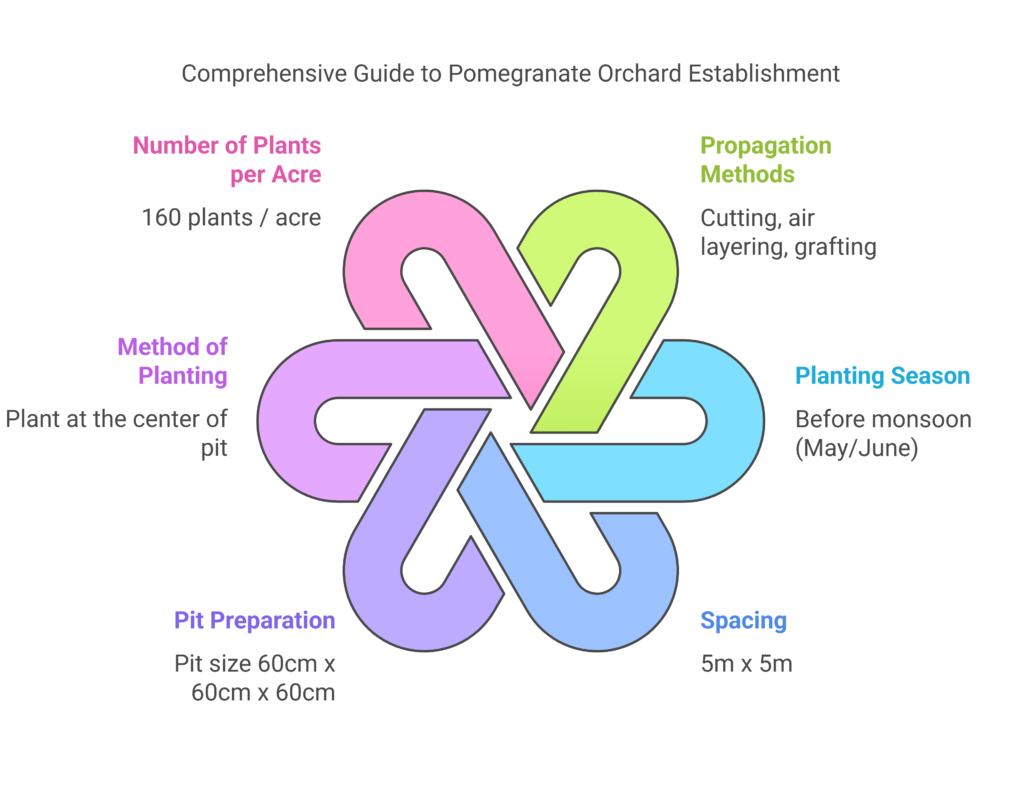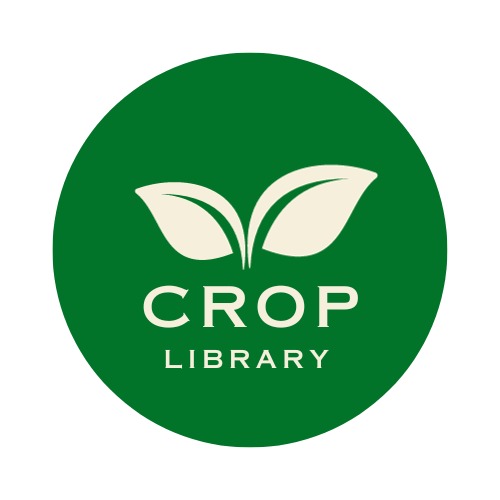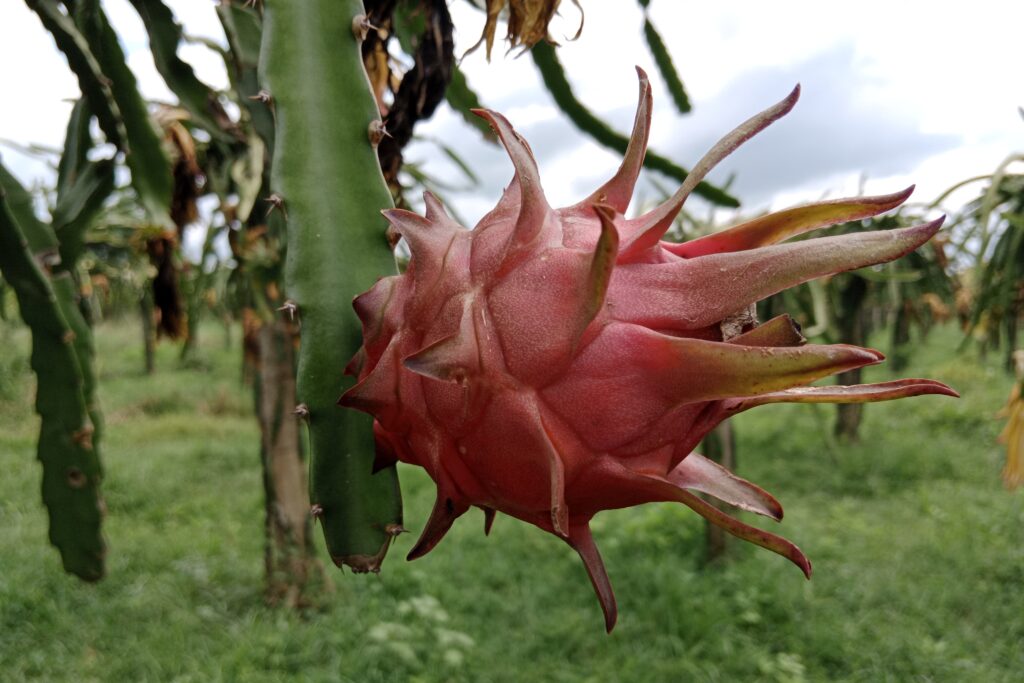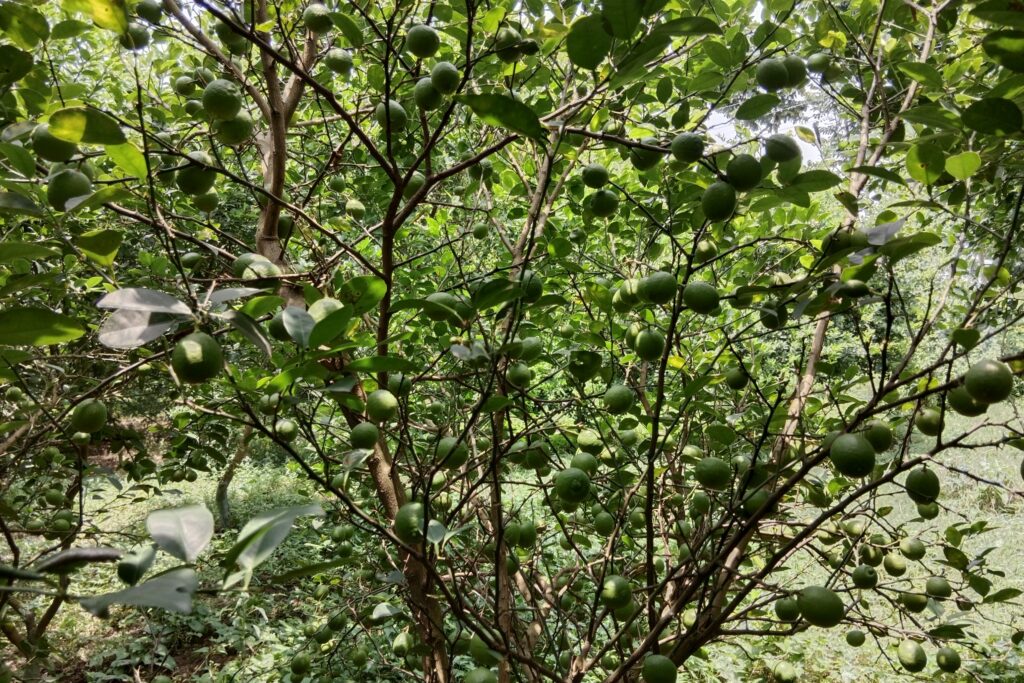Pomegranate Farming
Farmers are increasingly choosing to grow pomegranates because of their high profitability and growing demand in both home and foreign markets. The fruit has great nutritional value and therapeutic qualities in addition to its wonderful flavor, which makes it a highly sought-after crop. Pomegranate farming profit per acre can be increased if the grower follows the information given in this article.
We will give a thorough introduction to pomegranate cultivation in this post, including important topics such orchard plan, climatic and soil needs, and land preparation. Selecting the appropriate variety, setting up an irrigation system, and implementing efficient pest and disease control techniques are all crucial factors in successful growing. We’ll also look at the financial factors, such as the planting cost up front, yearly upkeep costs, and anticipated returns.
With proper care and management, pomegranate orchards can begin generating substantial income from the third or fourth year of planting. We’ll break down the potential profit per acre, highlighting factors such as yield per tree, market prices, and strategies to maximize profitability. By the end of this guide, you’ll gain a comprehensive understanding of what it takes to succeed in pomegranate farming and how to turn it into a profitable venture.
Land preparation
The first step in pomegranate farming is proper land preparation. The land is ploughed 2-3 times and brought to a fine tilth. The land should be plowed thoroughly to ensure a fine tilth. It is essential to remove any weeds, stones, or debris that may hinder the growth of the plants. Proper leveling of the land is also crucial to ensure uniform irrigation.
Climate
Pomegranates thrive in a semi-arid climate with hot summers and cool winters. The ideal temperature range for pomegranate cultivation is between 25°C to 35°C. The crop requires a dry climate during the flowering and fruiting stages to prevent fungal diseases. However, it is essential to provide adequate irrigation to support growth during dry spells.
Soil type
Although pomegranates can be grown in many different kinds of soil, they do best in sandy loam or well-drained loamy soils that have a pH between 6.5 and 7.5. The soil should be able to store water well and be rich in organic stuff. Steer clear of soggy or salinized soil as these conditions can hinder plant development.
Orchard Layout
Pomegranate farming success depends on the orchard’s layout. To ensure sufficient solar exposure and appropriate air circulation, trees should be positioned in a methodical manner. The square system is the most often used of the several orchard designs. This layout creates a square pattern by planting trees in both rows and columns at equal intervals. This approach is well-liked since it is straightforward and manageable.
Row orientation: To provide consistent exposure to sunshine throughout the day, rows should be aligned north-south. This promotes healthy development and maximizes photosynthesis.
Planting of Pomegranates
The arrangement and planting of pomegranate trees are critical for establishing a productive orchard. Proper planning ensures optimal growth, efficient resource use, and ease of management. Below are the key considerations and practices involved in pomegranate planting:

Propagation Methods
Pomegranate plants are primarily propagated vegetatively through methods such as cuttings, air layering, or gootee (grafting). These techniques ensure uniformity in growth and maintain desirable characteristics of the parent plant.
Planting Season
The ideal time for planting is either at the onset of the monsoon or towards the end of the monsoon. These seasons provide favorable conditions, such as adequate soil moisture and reduced transplanting stress, for the plants to establish well.
Spacing
Pomegranate orchards should be spaced 5m x 5m apart. Each tree will have enough space to grow thanks to this layout, which also allows for adequate sunshine penetration and air circulation, both of which lower the likelihood of pests and illnesses.
Pit Preparation
In accordance with the layout design, 60 cm³ pits are excavated and exposed to sunshine for ten to fifteen days in order to eradicate soil-borne diseases. After that, dry leaves are placed on the bottom of the trenches, up to 30 cm deep. The contents of these containers include 500 g of neem cake, 100 g of Trichoderma viridae, 1 kilogram of single super phosphate, 20–25 kg of farmyard manure (FYM), and topsoil. To settle the soil and promote microbial activity, the pits are watered after preparation.
Method of Planting
During planting, a small pit is dug at the center of the prepared hole, just large enough to fit the soil ball of the plant. The polythene covering the root ball is carefully removed without disturbing the roots, and the plant is gently placed into the hole. Soil is lightly pressed around the base to eliminate air gaps, and the plant is watered immediately. Wooden stakes are used to support young plants and prevent damage from wind.
Number of Plants per Acre
At a spacing of 5×5 meters, approximately 160 plants can be accommodated per acre. This number may vary slightly depending on the specific variety, planting method, and soil conditions.
Drainage System
Proper drainage is critical to prevent waterlogging, which can harm pomegranate plants. The orchard should be designed with a gentle slope to facilitate natural water flow. Additional drainage channels can be constructed to manage excess water effectively.
Windbreaks
In areas susceptible to strong winds, windbreaks such as tall trees or hedges should be planted around the orchard. These protect young plants from wind damage, ensuring better establishment and growth.
By following these practices, pomegranate farmers can create an efficient and productive orchard, laying a strong foundation for healthy trees and high yields.
Irrigation of Pomegranate
Regular irrigation is necessary for pomegranates, particularly during the early growth and fruiting phases. The most effective technique is drip irrigation since it guarantees even water distribution and reduces water waste. The soil type, environment, and plant growth stage all affect how frequently a plant has to be watered.
| S.N. | Age of Plant | Daily Water Requirement (Liters) |
| 1 | 1 Year | 2–3 liters |
| 2 | 2 years | 7–10 liters |
| 3 | 3 years | 20–22 liters |
| 4 | 4 years | 27–30 liters |
| 5 | 5 years | 35–40 liters |
(Source: Bangar and Kadam, 2000)
Fertilizer and Manures for Pomegranate
Here is a general guideline for the annual dose of compost, urea, DAP (Di-Ammonium Phosphate), and potash (MOP) for pomegranate trees based on their age. The doses are in kilograms per tree per year:
| Age of Tree (Years) | Compost (kg/tree) | Urea (g/tree) | DAP (g/tree) | Potash (MOP) (g/tree) |
| 1 | 10 | 150 | 100 | 100 |
| 2 | 15 | 200 | 150 | 150 |
| 3 | 20 | 320 | 160 | 200 |
| 4 | 25 | 440 | 200 | 300 |
| 5 | 30 | 600 | 300 | 400 |
| 6- 9 year | 35 | 720 | 360 | 400 |
| 10 years & above | 40 | 1000 | 500 | 400 |
- All FYM should be applied just before the onset of monsoon.
- Applying fertilizer in equal split dosages is recommended in February, June, and October.
Pest and Diseases
Common Pomegranate Pests and Their Control
Pomegranate trees are often affected by pests like aphids, whiteflies, scales, and fruit borers. Aphids and whiteflies feed on sap, while scales attach themselves to branches and leaves, causing damage. Fruit borers, on the other hand, tunnel into the fruit, leading to significant losses.
Effective pest control methods include encouraging natural predators such as ladybugs and parasitic wasps to keep pest populations in check. Spraying neem oil or horticultural oils can disrupt pest life cycles, and insecticidal soaps are particularly useful against soft-bodied insects like aphids. Always follow product instructions for safe application.
Common Pomegranate Diseases and Management
Pomegranate trees can be harmed by diseases like leaf spot and powdery mildew, which lower fruit yield and quality. Leaf spot manifests as dark-bordered circular lesions on leaves, whereas powdery mildew shows as a white, powdery covering on leaves and fruit.
Avoid overwatering, use fungicides when the weather is humid, and prune your plants cleanly to get rid of diseased branches. Proper tree spacing and clearing fallen debris are examples of cultural activities that enhance air circulation and lower the burden of disease. Frequent monitoring guarantees early problem identification and resolution before they worsen.
Cost of investment per acre for Pomegranate Farming
Here’s a detailed breakdown of the cost of investment and income potential for pomegranate farming, optimized for the keyword “pomegranate farming profit”:
(All the amount mentioned is in Nepalese Currency)
Estimated Cost of Investment Per Acre
| S.N. | Categories | Estimated Cost (NRs.) |
| 1 | Land Preparation (plowing, leveling, pit digging) | 50,000 |
| 2 | Pomegranate Saplings (160 plants × NRs. 300) | 48,000 |
| 3 | Fertilizers and Manure | 80,000 |
| 4 | Irrigation System Setup (Drip) | 150,000 |
| 5 | Labor Costs (Planting, Maintenance) | 50,000 |
| 6 | Pest & Disease Control | 40,000 |
| 7 | Miscellaneous Costs (Pesticides, Mulch, etc.) | 50,000 |
| Total Cost | 468,000 |
Annual Maintenance Cost (From the Second Year Onwards)
Once the pomegranate orchard has been established, the annual maintenance cost for managing the orchard typically ranges between NRs. 100,000 and NRs. 150,000 per acre. This cost includes expenses associated with routine orchard management activities such as pruning, irrigation, pest and disease management, fertilization, labor charges, and other miscellaneous operational costs required to ensure healthy tree growth and optimal fruit production. Proper maintenance during this phase is crucial for sustaining the productivity and profitability of the orchard.
Income from 1 Acre Pomegranate Farming
| Year | Estimated Yield/Tree (kg) | Yield/Acre (kg) | Market Price (NRs/kg) | Total Income (NRs.) |
| 3rd Year | 12 kg | 1,920 kg | 200 | 384,000 |
| 4th Year | 20 kg | 3,200 kg | 200 | 640,000 |
| 5th Year | 30 kg | 4,800 kg | 200 | 960,000 |
| 6th Year | 40 kg | 6,400 kg | 200 | 1,280,000 |
| 7th Year & Onward | 50 kg | 8,000 kg | 200 | 1,600,000 |
Analysis of Pomegranate Farming Profit Per Acre
- Pomegranate farming becomes highly profitable from the 5th year onwards.
- The break-even pointis typically achieved by the 4th or 5th year.
- With proper management, pomegranate farming can yield high returnsin the long term.
Also Read About: Avocado Farming Profit per Acre
Conclusion
Pomegranate farming is a lucrative agribusiness with significant profit potential. While the initial investment is moderate, the returns from the 5th year onwards make it a highly rewarding venture. By adopting best practices in cultivation, irrigation, and pest management, farmers can maximize their pomegranate farming profit.


